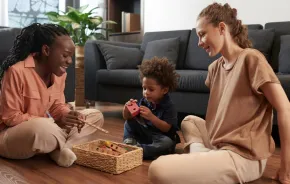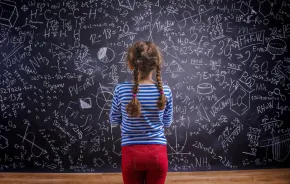Holocaust:
Benno and the Night of Broken Glass
By Meg Wivioitt (age 6 and up)
Benno, a ginger cat, belongs to everyone and yet to no one. He is a street cat who leads a routine cat life following the daughters of the Adler and Schmidt families to school, getting scraps from Moshe the local butcher and enjoying gentle ear rubs from Frau Gerber, the grocer’s wife. One night Benno hears glass shattering and people screaming in terror and smells heavy smoke that burns his eyes. In the morning he realizes that everything has changed and life as he knew does not exist anymore. Benno’s observation of Kristallnacht, (the Night of Broken Glass), that many believe to be the start of Holocaust, is an innocent, non-judgmental perception of the events which lead him to realize that something’s wrong without actually knowing the reason behind it or more importantly, why it is happening.
As Benno sees changes to certain homes and families (Jewish families) and none in other homes, the book helps open a discussion with children. The book concludes with a list of other resources on the subject, mostly picture books should you want to discuss the subject further.
Next: Terrible Things: An Allegory of the Holocaust
Terrible Things: An Allegory of the Holocaust
By Eve Bunting (age 6 and up)
There are different takeaways for different age groups from this book. While the little kids learn about standing up for each other and for what is right without necessarily teaching explicitly about the Holocaust, the older kids will begin to understand the context and connection to Holocaust if they’ve been introduced to it (or this provides the opening).Terrible Things is set in a forest. When terrible things come to the forest to take away animals that possess certain characteristics, the animals without those characteristics heave a sigh of relief. When they see the animals with the said characteristics being taken away, the remaining animals try to justify why they deserved to be taken away, until only the rabbits are left.
The book ends when only one little rabbit survives. The little rabbit wonders aloud, "If only we creatures had stuck together, it could have been different,” thus leading to a powerful segue for further discussion with the kids.
 Night
Night
By Elie Wiesel (age: 13 and up)
A highly intense memoir of having survived the Holocaust while his family died, Night is Wiesel’s account of the year he spent at Auschwitz and Buchenwald. It's a chilling story about his experiences in and between concentration camps, his gradual loss of faith and his struggling relationship with his dying father as he tries to save himself. Night eloquently addresses the truth of what the Holocaust was and what it would come to mean much later to all of humanity.
Next: Journey to Jo'burg: A South African Story
Apartheid:
 Journey to Jo’burg: A South African Story
Journey to Jo’burg: A South African Story
By Beverley Naidoo (age: 8 to 12)
When their baby sister Dineo falls sick, siblings Naledi and Tiro decide to go find their mother, who works far away from their village in Johannesburg. Their journey to Johannesburg to bring their mother back home to take care of little Dineo awakens them to the wider realities of apartheid. They experience prejudice and racism and are forced to mature quickly to understand the truth about their new world. While on their journey the children are helped by several other black people and are cautioned about the rules of apartheid that are strictly adhered to in the city.
The journey raises a lot of questions in the kids' minds, especially for Naledi, who wants to know more about what’s happening in her country and why her family is being treated the way it is.
 Zulu Dog:
Zulu Dog:
By Anton Ferreira (age: 10 and up)
This is the story of forbidden friendships between a Zulu boy and a white girl. Eleven-year-old Vusi takes as a pet a helpless puppy that has lost one leg, much to his mother’s disapproval. He names the dog Gillette for its razor-sharp teeth and teaches him to hunt. Running in parallel is the story of Shirley, the daughter of a white farmer. The book vividly describes the differences in lifestyles and settings of a Zulu and a white home, setting in context the post-apartheid South African world. Vusi and Shirley meet by chance and become friends because of their mutual fondness for Gillette. They maintain a clandestine friendship lest their families get to know of it and try to separate them. In the meantime, Shirley’s father is making plans of sending her to a boarding school, away from the black influences. Shirley protests and in desperation and runs away from home. The search for Shirley brings the whites and blacks together. The book does have a positive ending.
Next: Kaffir Boy: The True Story of a Black Youth's Coming of Age in Apartheid South Africa
 Kaffir Boy: The True Story of a Black Youth's Coming of Age in Apartheid South Africa
Kaffir Boy: The True Story of a Black Youth's Coming of Age in Apartheid South Africa
By Mark Mathabane (age: 13 and up)
This is a powerful memoir of growing up black in South Africa during apartheid. Mathabane recounts his mother’s struggle for his education and her unrelenting spirit, and her hope for a brighter future. Encouraged by her words and sharing her passion, he finds solace in reading: “Voracious reading was like an anesthesia, numbing me to the harsh life around me.” Mathabane learns against all odds, struggling in a world with few to no opportunities for blacks. He comes out triumphant, moving on to a college education.
Next:Henry's Freedom Box: A True Story from the Underground Railroad
Slavery and Civil Rights in America:
 Henry's Freedom Box: A True Story from the Underground Railroad
Henry's Freedom Box: A True Story from the Underground Railroad
By Ellen Levine (age: 6 to 8)
As a child, Henry wonders about his birthday and is frustrated that he does not know how old he is. If only he were free; if only he were allowed to celebrate his birthday. But life goes on; Henry soon grows up, marries and has children. He is finally happy and loves his family. His wife however is worried that the children will be taken away and sold as slaves, and sure enough his family is taken away and sold. Heartbroken, Henry wants to escape his cruel life of slavery to a land of freedom. He is helped by the people working in the Underground Railroad, including a white doctor. Henry mails himself in a box to Pennsylvania. Based on the true story of Henry “Box” Brown, the book keeps readers engaged and wishing for Henry's well-being. As soon as he is free, Henry declares the first day of his freedom as his birthday.
Kadir Nelson’s illustrations bring this heartwarming story to life. Every emotion, every struggle in Henry’s life in brought to life through Nelson’s artistic prowess. This book is a poignant introduction to apartheid for young readers.
Next: The Watsons Go to Birmingham
 The Watsons Go to Birmingham
The Watsons Go to Birmingham
By Christopher Paul Curtis (age: 8 to 12)
The book starts off with Kenny, a 9-year-old boy, describing why his middle-class black family is called ‘Weird Watsons of Flint, Michigan.’ He has an older brother, Byron, and a younger sister, Jo. When Byron continues to be a trouble-maker, the family decides to head to Birmingham to leave Byron with his strict grandmother for the summer of 1963. Presumably, she is the only person who can set him straight. While in Birmingham, the church where Jo has gone for Sunday school is bombed. Kenny is devastated as he assumes his sister is dead. The story brings out the family's connection and intense bond between the siblings is expertly and also brings the readers’ attention to the prevailing unrest in the American South at the time. This book has it all, from family humor, to the universality of sibling rivalry, to the impending danger to the family unit. There's a point near the end when Kenny says he feels ashamed but doesn't know why. Curtis captures the trauma in young Kenny’s mind and presents the state of confusion and realization exquisitely.
Next: Coming of Age in Mississippi
 Coming of Age in Mississippi
Coming of Age in Mississippi
By Anne Moody (age: 13 and above)
Anne Moody’s autobiographical account of the most dangerous days of her life in the pre-Civil Rights era is her story of surviving as a black woman with dignity and confidence. As the oldest of nine kids, Anne started working at the age of 9 to support her poverty-stricken family. The book follows Anne’s journey through school, celebrating her 8th grade homecoming queen title to her intriduction to the NAACP in high school and latermembership in CORE (Congress of Racial Equality). Moody shares details about intimidation and abuse, both physical and mental, inflicted by the Ku Klux Klan against African Americans and their white supporters, and about the institutionalized racism that ensured black families were always poor. We travel with Moody to learn about Medgar Evers' shooting, President Kennedy’s assassination, and to hear Martin Luther King’s ‘I have a Dream’ speech. The book concludes with a glimpse to her activism days and her unapologetic fight for dignity as she boards the Greyhound for Washington to talk about the conditions in Mississippi.
Next: Other Books on these Topics
 Other Books on these Topics:
Other Books on these Topics:
Holocaust:
The Butterfly by Patricia Polacco (age 8 and up); Rose Blanche by Christophe Gallaz, (age 10 and up); Erika’s Story by Ruth Vander Zee (age 8 and up); The Whispering Town by Jennifer Riesmeyer Elvgreen (age 8 and up); Yellow Star by Jennifer Roy (age 9 and up); and of course, The Diary of a Young Girl by Anne Frank (age 12 and up) and Number the Stars by Lois Lowry (age 9 and up).
Apartheid:
Waiting for the Rain by Sheila Gordon (age: 12 and up); Out of Bounds by Beverley Naidoo (age: 10 and up).
Slavery and Civil Rights in America:
The Story of Ruby Bridges by Robert Coles (age: 5 to 8); The Mighty Miss Malone by Christopher Curtis (age: 9 to 12); Stolen Into Slavery by Judith Bloom Fradin (age: 10 and up)
Another good place to start would be the “If You…” series that introduces and talks about various events in history. The “Who Was ...” series are biographical stories of famous personalities in history.
Share your favorites with us. What books would you recommend to teach kids about difficult events in history?














